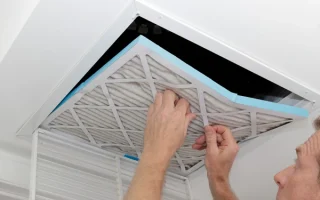Introduction:
Roof rights, also known as air rights or airspace rights, refer to the legal ownership and control of the space above a building’s roof. While homeowners typically own the land and structures on their property, roof rights add another layer of complexity to property ownership. In this article, we’ll delve into what roof rights entail, how they can impact homeowners, and important considerations to remember.
What Are Roof Rights?

Roof rights grant property owners the exclusive right to use and control the airspace above their buildings, including the area above the roof. These rights may include constructing additional structures, installing equipment, or engaging in activities that utilise the airspace. However, the extent of roof rights can vary depending on local zoning regulations, property covenants, and legal agreements.
Ownership and Control:
Roof rights are property interests that can be bought, sold, leased, or transferred separately from the underlying land and structures. In some cases, property owners may choose to retain roof rights for themselves, while in others, they may sell or lease them to third parties for various purposes.
Common Uses of Roof Rights:
- Roof Gardens and Green Spaces: Property owners may choose to develop rooftop gardens or green spaces to enhance the aesthetic appeal of their buildings and promote environmental sustainability. Rooftop gardens can provide valuable outdoor space in urban environments and help mitigate stormwater runoff.
- Solar Panels and Renewable Energy: Installing solar panels or other renewable energy systems on the roof can help property owners reduce their reliance on traditional energy sources and lower utility costs. By harnessing solar energy, homeowners can generate electricity while minimising their environmental footprint.
- Outdoor Living Areas: Rooftop terraces, patios, and recreational areas can provide homeowners with additional living space and opportunities for outdoor relaxation and entertainment. These areas may be outfitted with seating, dining areas, fire pits, and other amenities to create a comfortable outdoor living experience.
- Communication and Antenna Equipment: Telecommunication companies and broadcasters may lease roof rights to install communication towers, antennas, or satellite dishes on the roof of a building. These installations facilitate wireless communication and broadcasting services while generating rental income for property owners.
- Air Conditioning and HVAC Equipment: Property owners may utilise roof rights to install air conditioning units, HVAC systems, or other mechanical equipment on the roof. Placing these systems above the roof helps free up space on the ground and minimises noise and visual impact.
Legal Considerations:
- Zoning and Building Codes: Local zoning regulations and codes may restrict the height, size, and use of rooftop structures. Property owners should familiarise themselves with applicable zoning ordinances and obtain necessary permits before undertaking rooftop development projects.
- Property Covenants and Restrictions: Some properties may be subject to restrictive or deed restrictions that govern roof rights. These restrictions may limit the types of structures or activities allowed on the roof and require compliance with specific design guidelines.
- Easements and Encroachments: Existing easements or encroachments on the property may impact the exercise of roof rights. Property owners should conduct a thorough title search to identify any encumbrances affecting their ability to use or develop the airspace above their buildings.
- Liability and Insurance: Property owners should consider the potential liability associated with rooftop activities and installations. Adequate insurance coverage, including liability insurance and property insurance, can help protect against possible risks and liabilities arising from rooftop operations.
- Neighbour Relations: Depending on the proximity of neighbouring properties, rooftop development projects may impact neighbouring properties’ views, privacy, and property values. Property owners should communicate with neighbours and address any concerns or objections regarding rooftop development plans.




